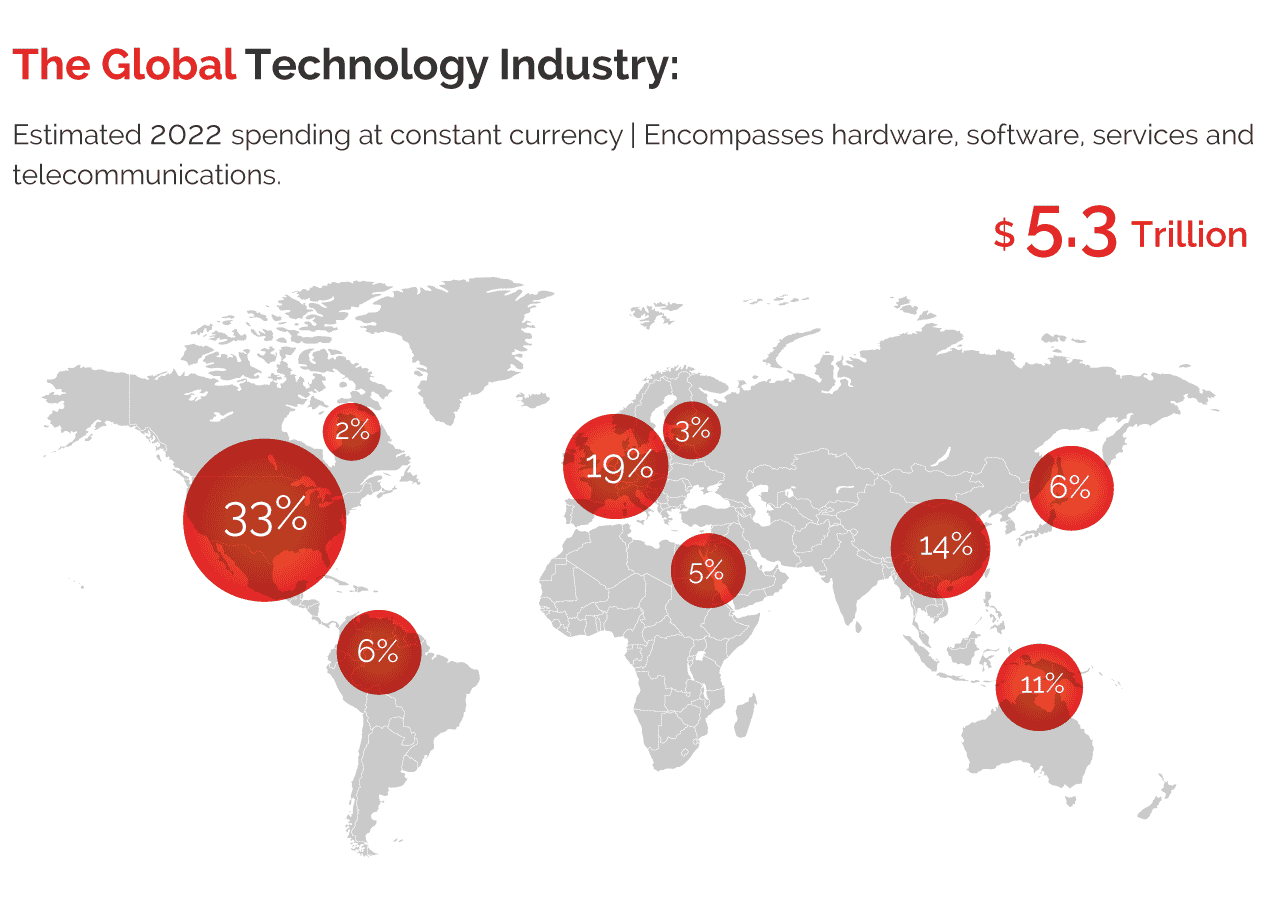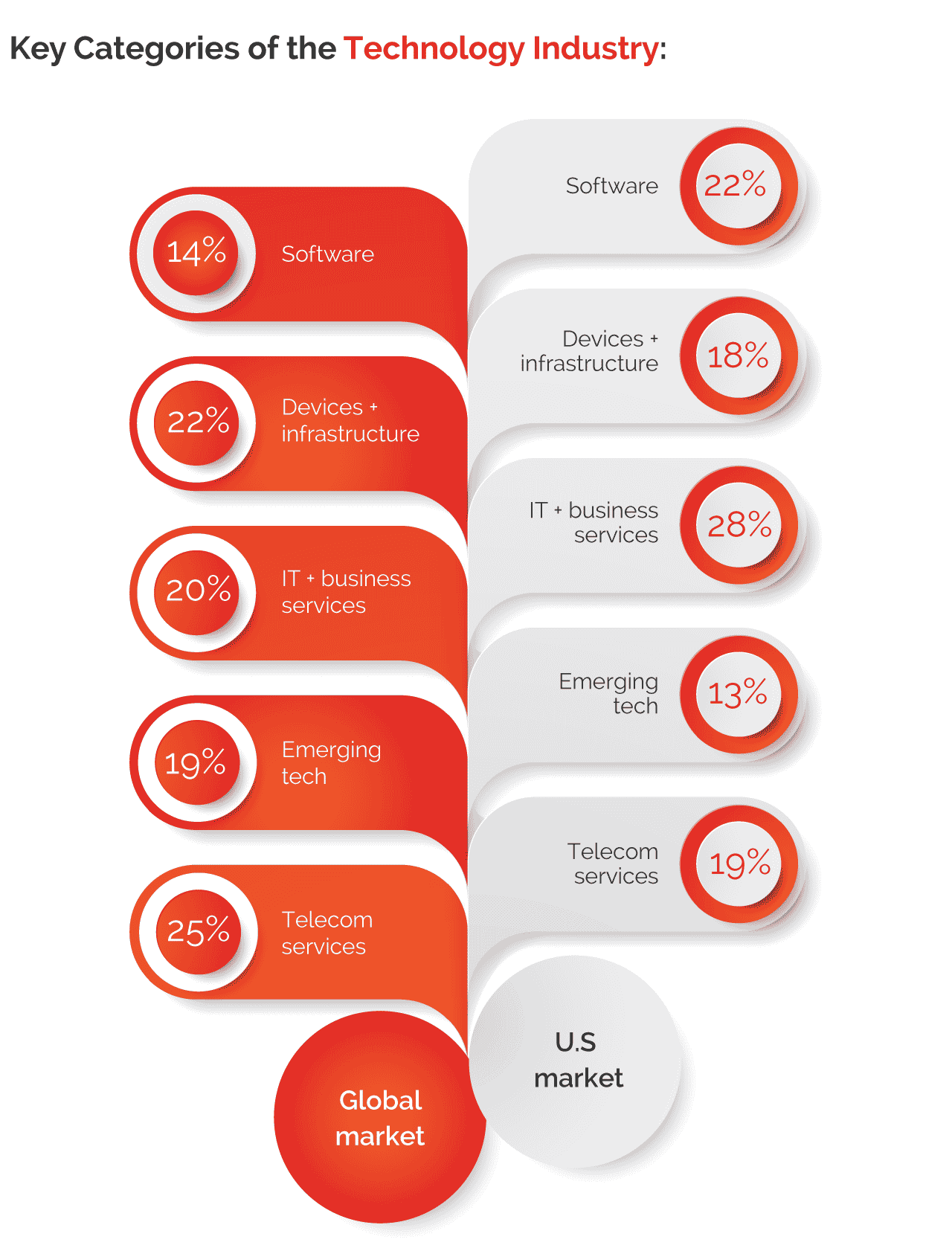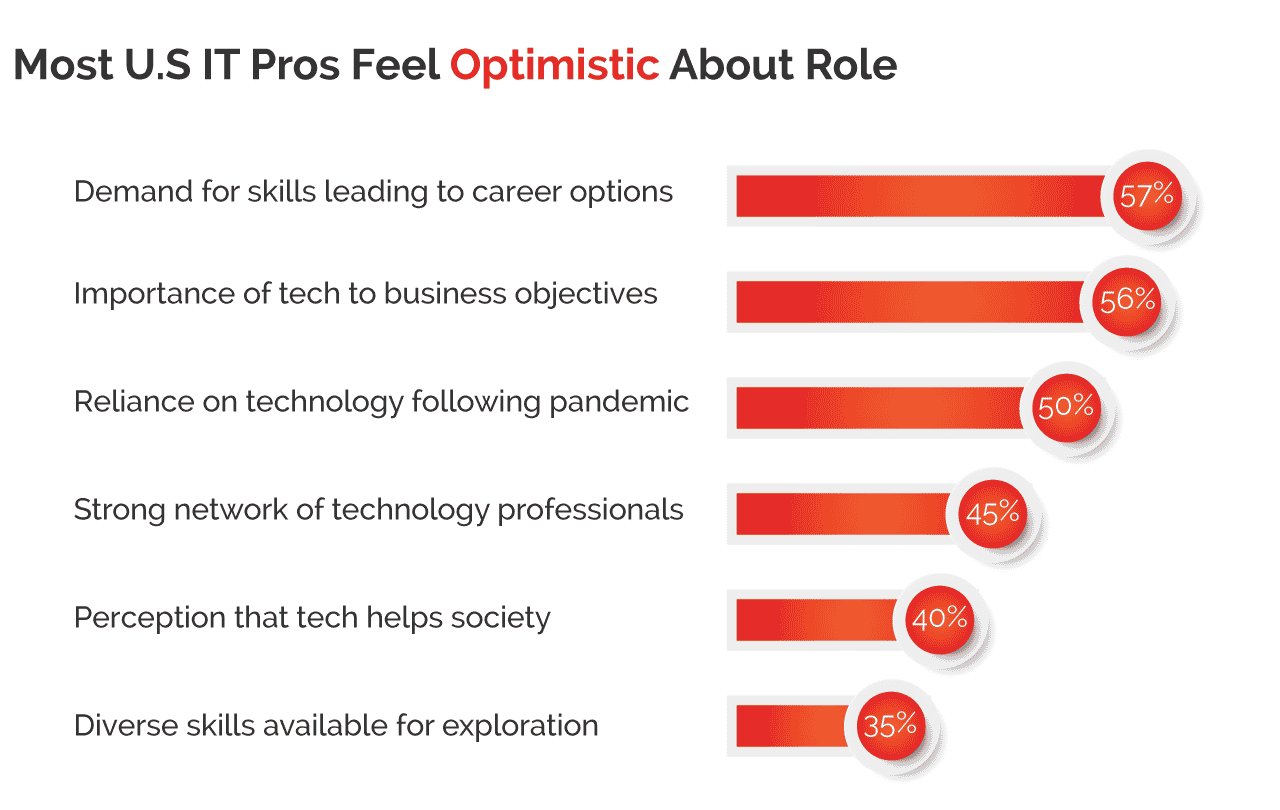IT Trends to Keep Your Eye On This Year – Part 2
IT Trends to Keep Your Eye On This Year – Part 2
This blog is a part of a two part series, if you not given that post a read, check out our Top 5 IT Trends to Watch in 2022 – Part 1 article.
IT Trends to Keep Your 👀(Eye) on, This Year
Most technologists are futurists by nature and in keeping with that namesake they are almost always on the look out for what the key tech trends are that will shape the next few months . This also helps them strategize their IT plans ahead of time and look into implementing these new innovations into the business in order to accelerate growth. As we enter Q3, let’s take a look at the many innovations and breakthroughs that are happening right now across the industry, and see how this might help impact businesses as well as the overall society in the latter half of 2022.
In a progressively connected world, technology plays a pivotal role in revolutionizing and reinventing how we run our businesses. As we slowly ease back into the old grind in a post pandemic future, there is a buzz around the latest tech trends that could help in addressing and solving some of the biggest business hurdles – building a more equitable and resilient society cushioning against any external and/or internal impacts.
“CEOs know they must accelerate the adoption of digital business and are seeking more direct digital routes to connect with their customers,” says David Groombridge, VP Analyst, Gartner. “But with an eye on future economic risks, they also want to be efficient and protect margins and cash flow.”

In this blogpost we have a rounded up the top 5 IT trends that we think will mold the rest of 2022. This is a continuation of a two part series, so if you have missed out on the first part, head on over!
Trend 1: Channel Cybersecurity Has a Ways to Go
Houston, we have a problem.
In spite of the persistent drumbeat for channel firms to develop a well founded cybersecurity strategy, a good number of companies are still struggling to see the wider picture. According to CompTIA’s 2021 State of Channel study, 36% of channel businesses say that they are just beginning to formulate their cybersecurity strategies or, even worse, are either behind schedule or not involved in cybersecurity at all.
That leaves nearly two-thirds of these firms that are in target or way ahead of the game with their efforts. That being said, in the segment of firms that have their efforts down to a tee, only 28% have considered cybersecurity as a strategic specialty. This means that the majority are not offering tools and services that span beyond the basics of antivirus and firewall protection. This is disheartening as cybersecurity is where the money is at today.
Think about services such as ransomware protection, penetration testing, cyberinsurance or compliance risk evaluation, amongst others. Admittedly. there are bound to be challenges and risks that come with operating a successful cybersecurity practice. Some of which, include – the constant need to keep up with latest threats, meet ever-evolving skill requirements, educating customers on best practices and navigating legal accountability should anything go wayward. But its time, that we bin these excuses and look at the increasing numbers of cyberattacks that have hit home for a number of MSPs, exposing their internal vulnerabilities, essentially putting their customers at risk.
At this point, there is no choice but for channel firms to level up their game – or risk losing out on profit gains. The global cybersecurity services market is lucrative, expected to reach $192.7 billion by 2028, according to a 2021 report by Grand View Research. “That’s not money you want to leave on the table. So next year, expect channel firms to double down on cybersecurity to win deals and instill confidence in increasingly nervous customers. Ignoring this critical discipline puts a channel firm at a distinct disadvantage in the race to land and cement new customers for the future.”
Trend 2: Consulting: Leveraging today’s Channel Opportunity
The technology purchasing trends have fundamentally shifted.
The statement above should be cemented in the minds of every channel company today, particularly firms with product centric and transactional primary business models. There are many components that have led to these changes in customer habits such as, the rise of easy-to-use/quick-to-buy online marketplaces, the surge in line-of-business tech buyers that purchase differently than IT departments do, and the influx of new types of players in the channel that do not operate their businesses or relationships with customers or vendors in traditional ways. All these components have factored into channels firms reconsidering their business model and one model that has seen an uptick in adoption, and is predicted to continue to do so is – consulting.
The term consulting can bring about many meanings, ranging from technology advice services to business-related mentoring and guidance. But what is certain is that consulting services, in particular those focused in assisting customers run their business better, whilst making the appropriate technology decision – are lucrative from a profitability standpoint and one that is also in-demand at present. Here’s a point to ponder on: Imagine, if customers today are purchasing directly from one of the large marketplaces such as Amazon’s or Google’s, channel firms aren’t part of that transaction. They can be part of the process, though, and that’s where consulting acumen comes in.
Consultants in essence play the role of an expert, helping guide customers through the things they do not know and have not considered, such as choosing the right fit for their business needs, understanding how to integrate that in with their current environment or how to secure it and ensure compliance. A business and/or technology consultant can be a vital lifeline in all these areas. In 2022, more channel firms will have a reckoning that reselling products and services in a cloud marketplace era is fading, but they have volumes of opportunity to transform or expand as business consulting experts (More on online marketplaces in the channel section below).
Trend 3: Chip Supply Chain Woes: A Wake-Up Call
Your company is only as good as its supply chain.
It really is quite simple, but a very important and impactful one. Could you imagine your firm, with zero inventory, components, and other parts ready to fulfil orders? The best engineered products in the world is not going to get built or delivered on time to meet demand, and that’s literally doomsday for any business. Take for example, electric car icons, Tesla. During its formative years, back orders of its vehicles kept mounting over capacity issues. Tesla and other carmakers are experiencing a similar scenario today, this time fueled by the global semiconductor shortage that also has hindered smartphone, PC and other chip dependent industries in the wake of COVID.
This time the shortage has shined a light on one of the downside of an economy where the various cogs in the machine – product development, manufacturing, inventory, and delivery – are dispersed across the globe. For a couple of decades now, the concept of just-in-time manufacturing has been heralded as a way for manufacturers, suppliers and providers to stop stockpiling inventory and parts, instead responding as close to real-time as possible to demand for goods. However, the current chip shortage debacle is calling this method into question in some tech circles, which are now wondering if it might be wiser to keep inventory, parts and components close to home, regardless of whether customer orders have been placed yet.
This, they contend, could avoid the supply chain backlog problems that have resulted in long wait times during COVID. The channel, often the last link to the customer, relies on accurate information from its partners upstream—OEMs, distributors, etc.—as to the availability and ship time of products. Lacking that, they unfortunately risk incurring customer wrath. To avoid this in 2022, channel firms, particularly the hardware-focused, may begin to consider holding some inventory of their own in the event of component or other backlogs overseas.
Trend 4: Software Development, More Granular
Software development used to be the domain of large companies.
Tech adoptions always comes with a hefty price tag. For a long time, only large businesses would have been able to afford the mainframes and the programming skills to capitalize on these massive infrastructures. For years, other companies that were working on much smaller budgets had no choice but to rely on packaged software, where the base functionality still offered huge benefits. Nonetheless, things have changed. As the foundational computing platform has stabilized and technology has become democratized, companies have evolved their investment strategy to capture competitive advantage. Driven by the desires to customize and automate, increased organizations have started adding software development skills.
A major reason for the wider adoption is that the approach to software development has changed. In exchange for massive development teams building monolithic applications, companies have lowered the barriers of entry by relying on open source software and microservices. Similarly, cloud computing also plays a huge role as companies can stand up multiple environments for development, testing and production without sinking the capital investment needed for hardware to run these environments. Software applications continue to grow in number and complexity as businesses leverage technology to connect their workforce, reach new customers and improve productivity. Unfortunately, the skill supply cannot keep up with demand. As a result, organizations will keep trying to stretch their development efforts by breaking applications down into bite-size pieces. Not only can these smaller functions be refreshed more quickly, but they can also be reused throughout a comprehensive software strategy.
“Whether this is an evolution of microservices or an innovative approach such as Gartner’s composable applications, the trend of reusable pieces of software will simplify development but add challenges in integration and architecture management. In order to manage the second-order effects of granular applications, companies will also accelerate their adoption of DevOps, with the most advanced companies exploring AIOps to further automate their established processes.”
Trend 5: Foundational Data Management Drives an Analytics Revolution
As the newest area within the functional IT framework, the field of data is still in nascent stages at most organizations when compared to infrastructure, software development or cybersecurity.
There has certainly been a spotlight on the data revolution. Data science is commonly cited as one of the fastest-growing job roles (30% by 2030 according to CompTIA’s Cyberstates report). One reason for this is that there are currently fewer data scientists compared to other technology roles. With a smaller base, it takes fewer new strides to achieve significant growth.
That being said, it still does not take away the fact that companies are still eagerly pursuing analytics as a part of their business strategy. The promise that analytics provides lies in its capabilities to describe past business transactions, improve current business operations and predict future business opportunities. However, realizing that promise requires a structured foundation of corporate data, and many companies are still struggling to build this. Data silos and nonexistent data policies are hurdles that get in the way of natural language processing, machine learning or AI-driven automation. Although businesses are eager to reap the benefits of these advanced tactics, moving fast will certainly break things without producing many useful results.
In order to start using and incorporating analytics as a tool to take business operations to the next level, companies must start with data basics. This starts with an assessment of all corporate data to understand where it lives and how it is used, a classification of all data to define requirements around usage and security, and a strategy for data to outline goals and identify tradeoffs. From there, most companies may want to update their storage schemes or ensure that they are getting the most out of traditional tools like relational databases. Only at that point are organizations ready for tools that work with unstructured data, algorithms that leverage machine learning or models that rely on real-time data streams. Business will be done differently in the future thanks to data analytics, and companies with a strong data foundation will lead the way.
We have more tips and tricks to give you!
Now that’s our round up of the IT trends you should keep an eye out for this year. This blog post is the 2nd part of a our two-part series on IT trends, if you have not read the first article yet, head on over now. Trust us, you don’t want to miss out.
Since you now have some insights on how technology will impact 2022, why don’t you stay a few steps ahead of your competitors, by getting you and your team industry recognized training and certifications, so you are equipped to take on the 2nd half of the year!
Source: CompTIA IT Industry Outlook 2022









